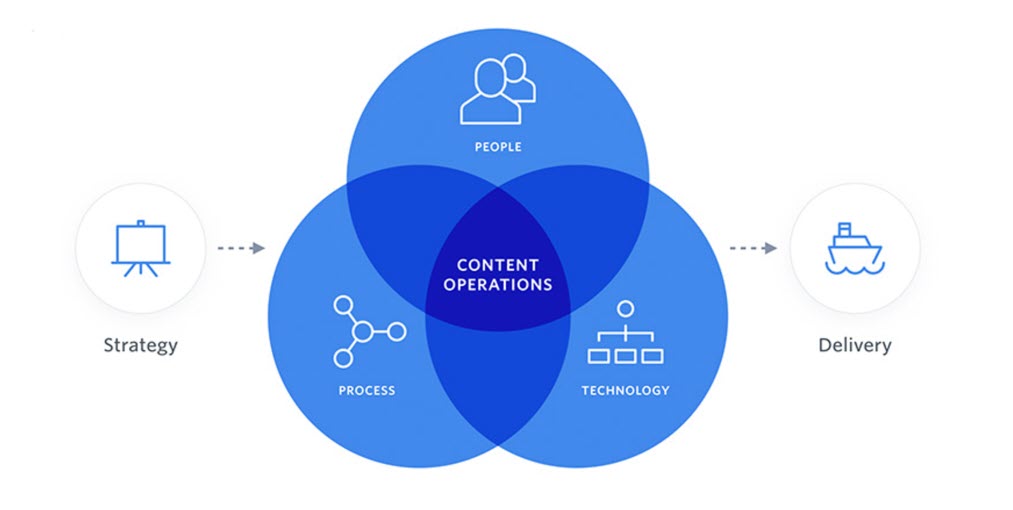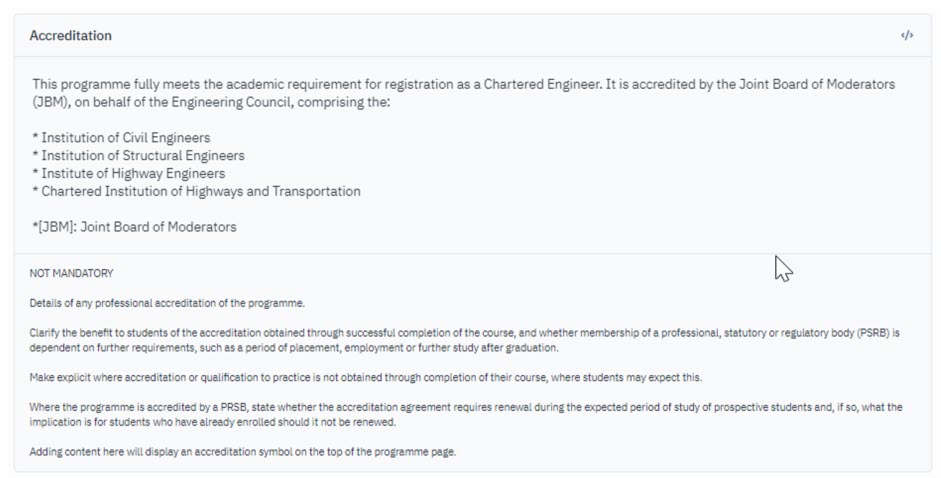Growing our content operations maturity
Technology is vital in the delivery of a quality website. But it’s only part of the story. People and process matter just as much. In this post I’ll introduce the concept of content operations, some of the changes I’ve introduced to evolve what we do and how we do it, and where I think we need to focus next.
As has been covered by Neil in previous posts, our degree finders are at technical end-of-life which means we’ve not been able to improve how they work for students or for our colleagues in schools who work with us to curate content through the academic cycle.
Read Neil’s post about:
- Why we need to develop a new system to replace the degree finders
- Plans for the development of a future state – including slides and video
While this publishing platform hasn’t been able to evolve, I’ve still been able to bring change and improvements. Over the past couple of years I’ve introduced new software, processes and support for colleagues to evolve how we deliver degree programme website content.
What are the degree finders?
If you’re not working in student recruitment at the University of Edinburgh, or you’ve never applied to study with us, you possibly have no idea what I’m talking about.
We have two degree finders, one for undergraduates and one for postgraduates. They’re basically directories of degree programmes students can apply for in a given academic year.
They exist at the centre of a broader ecosystem of online provision for prospective students, providing much of the most critical information needed for someone to decide whether they want to apply to study at the University of Edinburgh.
What is content operations?
Content operations, put simply, is the behind-the-scenes work of managing content activities as effectively and efficiently as possible.
At its core, content operations brings in a mix of elements related to:
- People: The skilled human beings behind the content, bringing in content roles, and responsibilities – as well as content training and culture within a team.
- Process: The workflow for all our different types of content, which also wraps in the means by which we continue to evaluate and govern our content
- Technology: The tech and platforms we use (and hone over time) to support the means to collaborate on content across roles, set content review points, or even ensure multi-lingual support
Why is content operations important?
Content operations is that critical logistical space that exists between a robust content strategy and the act of publishing content itself.

Content operations aligns people, process and technology. Source: GatherContent blog
When we have misalignment between our people, our process, or our platform, the result is greater effort to create and sustain effective content.
How our content operations have evolved
Through the course of my first year with the newly-formed Prospective Student Web Content Team I could see there were real opportunities to enhance our processes thanks to the significant increase of content designers joining me to take over the process.
While at the time there was no confirmed plan to replace the degree finders, there was an immediate need to address my key content operations concerns around roles, responsibilities and process flow.
Employing the GatherContent system helped me to being to bring changes in a systematic fashion.
As well as adopting new software to help me manage the process and tailoring it to our needs, we implemented new training and support for school editors. With these in place we were able to:
- Clarify and formalise the different roles in the process, and what is expected of them
- Introduce a workflow for all roles, bringing in clear steps for academics, school editors and the PSWC team
- Provide a single space where the different roles could collaborate with each other
- Combine content guidance for all roles with new, structured content templates that help colleagues deliver better content first time

The workflow of our undergraduate project in GatherContent
The results were very encouraging. Project velocity increased. Our school editors felt they were much more involved with the process. The project management itself was far easier, with a transparent view of all progress for key stakeholders. And, critically, the content quality increased significantly.
Post-project feedback from school editors was overwhelmingly positive. We focused on new areas of opportunity through a formalised user survey and followed up with some 121 interviews – all of which has informed further improvements to our process, communications and support.

With content templates, we can present specific content guidance for different areas of content
Looking to the future
Of course, there is no such thing as ‘job done’. There are several areas in particular where I would like us to improve further.
For example, although GatherContent provides a useful API (Application Programming Interface) – which is a way for two or more computer programs to communicate with each other – our legacy system cannot be integrated.
A future state built on a modern Content Management System (CMS) will integrate with GatherContent and mean that all our current manual lifting-and-shifting between systems will cease and we will gain around 2-3 weeks of effort each refresh project.
From a people and process perspective, the engagement of academic colleagues is an area we can definitely improve.
Specifically, we need to encourage more academic colleagues to engage fully with GatherContent. While many are working well with our amended content operation process, a notable minority are not, preferring instead to continue to work via Word documents.
Our undergraduate project work has acted as my main focus for improving content operations. We are not only progressing better content – we are ensuring active learning is a critical part of our approach.
And this means, excitingly, we can work to bring more coherent operations to other areas of our content estate.
What do you think?
What do you think? Are you a school editor who has been involved in the undergraduate project? As our team begins to define a user-centred degree finder, and a brand new CMS, what are your thoughts on coherent content operations?
Learn more about our work to design a future state to replace the degree finders




1 replies to “Growing our content operations maturity”